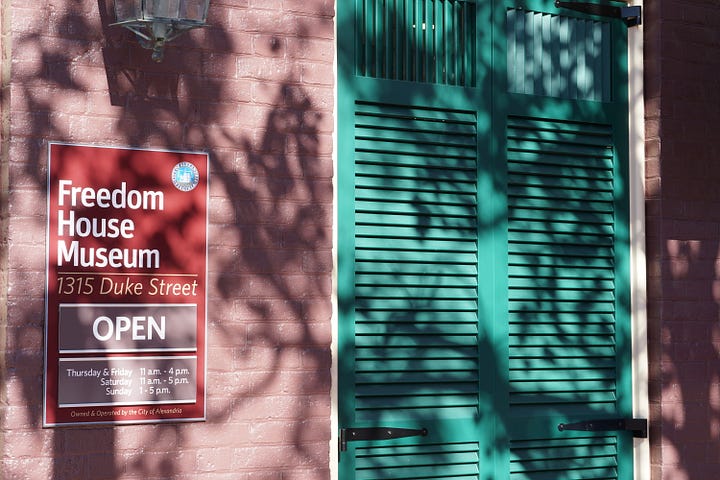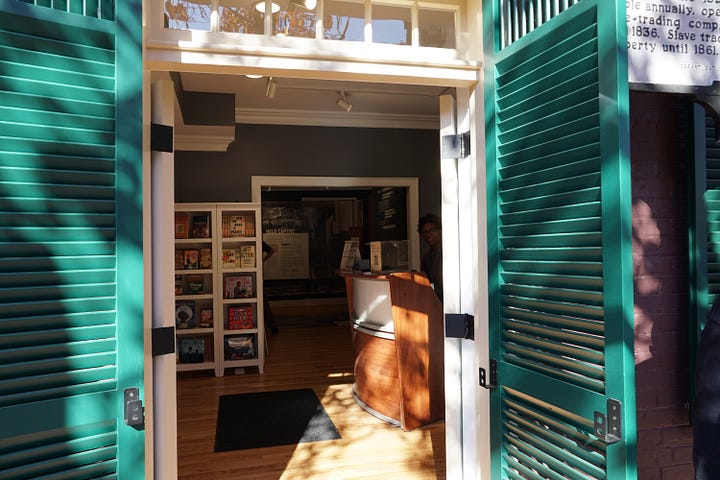Freedom House Museum reopens after exterior restoration
Former slave trading headquarters restored to 1861 appearance; interior work planned next

About 100 people gathered Saturday at the Freedom House Museum for a ribbon-cutting ceremony marking the completion of a 16-month exterior restoration project.
The work returned the building at 1315 Duke Street to its pre-Civil War appearance. The structure served as headquarters for Franklin and Armfield’s slave trading business from 1828 to 1861.
Mayor Alyia Gaskins, Vice Mayor Sarah Bagley, and Council members Canek Aguirre, R. Kirk McPike, Jacinta Greene, and John Chapman, along with City Manager James Parajon, attended the ceremony under clear skies and 67-degree temperatures.
“This museum is an intentional declaration that we will not forget our history,” Gaskins said. “We will choose to be intentional about telling the stories of our past.”
Gretchen Bulova, director of the Office of Historic Alexandria, said thousands of enslaved people were trafficked through the building to Deep South labor markets between 1828 and 1861.
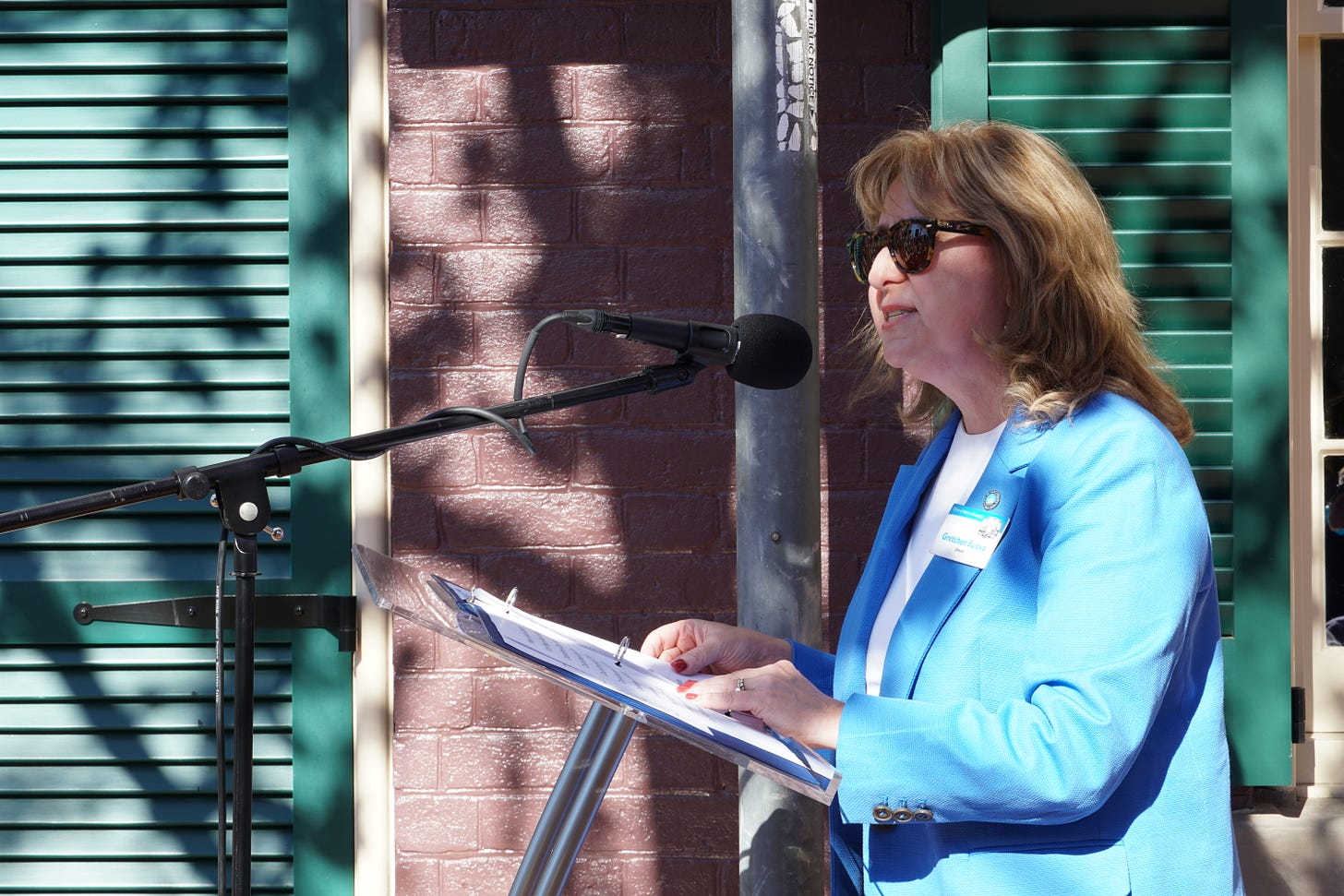
The building was constructed as a private residence in 1812. Franklin and Armfield leased it in 1828 for access to nearby wharves and docks, then purchased it with three lots in 1832.
Oak Grove Restoration Company completed the work under the guidance of Al Cox, the city’s preservation architect emeritus. The project used historic photographs, archival materials, and archaeological evidence. Work included returning a window to its original doorway configuration.
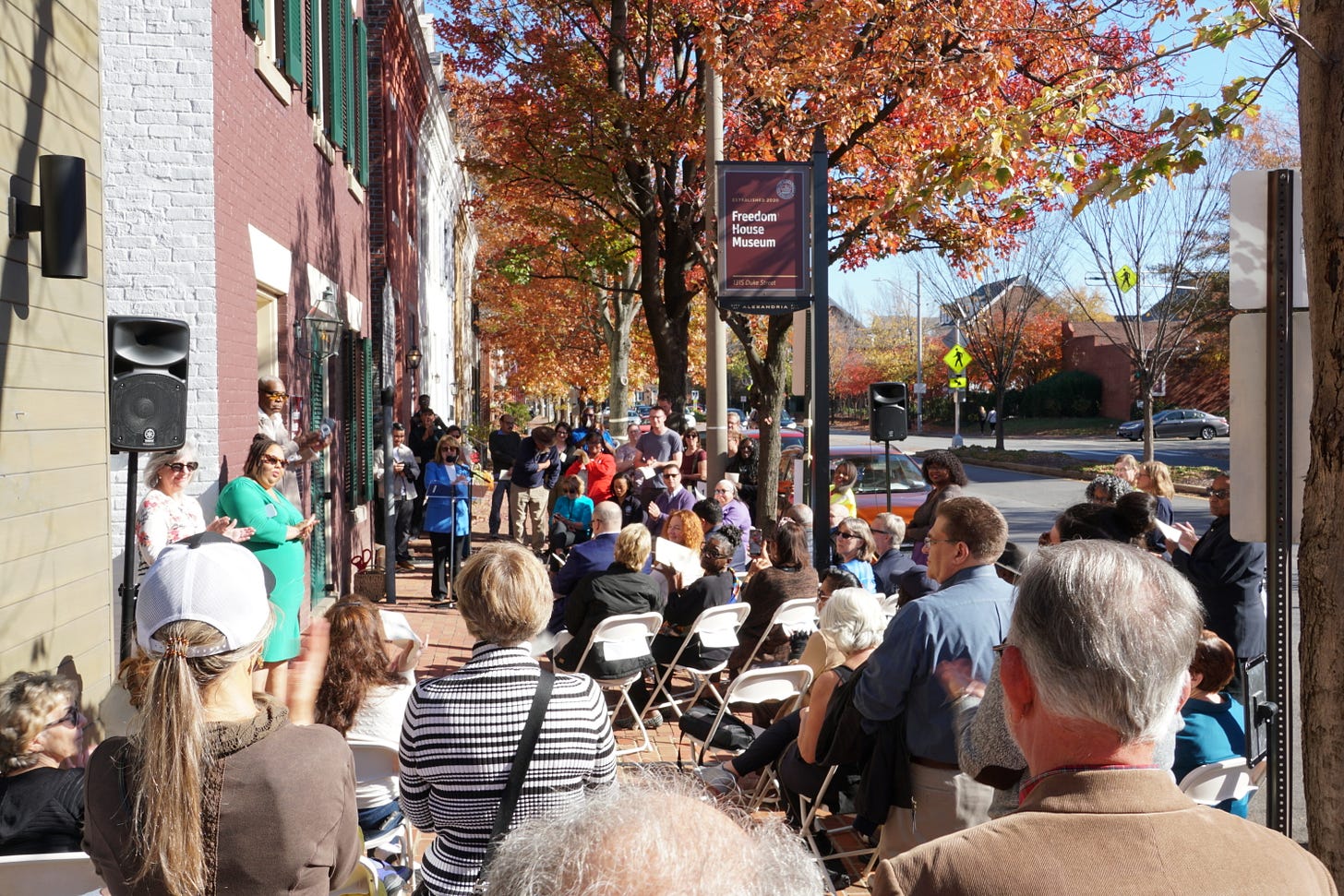
School connects history to site
Edward Donnellan Jr. from Gonzaga College High School shared research his students conducted about their school’s connection to the site.
Students discovered that an enslaved man named Gabriel worked at Gonzaga’s founding institution from 1822 to 1827. He was sold to Franklin and Armfield in June 1829 and held at the Duke Street location for three months before being shipped to New Orleans.
“My students have the manifest for the ship that he was taken to New Orleans on,” Donnellan said. “There were 141 names on that manifest.”
Students transcribed the names and honored them during a recent visit to the museum. They walked from the museum to the bottom of Duke Street, where enslaved people were loaded onto ships, and read each name aloud.

Donnellan read a student reflection: “Visiting the Freedom House was one of the most powerful experiences in my years at Gonzaga. What impacted me most was hearing my classmates’ poems and reflections while standing in the same space where enslaved people were once held and sold.”
Future plans
Audrey Davis, director of the African American History Division, outlined the museum’s goals.
“Our goal for Freedom House involves telling (an) honest, accurate history of the domestic slave trade in the United States,” Davis said. “We want to make sure the history of this place becomes part of America’s historic narrative.”
Davis said the museum aims to serve descendants of enslaved people and provide space for research and reflection.
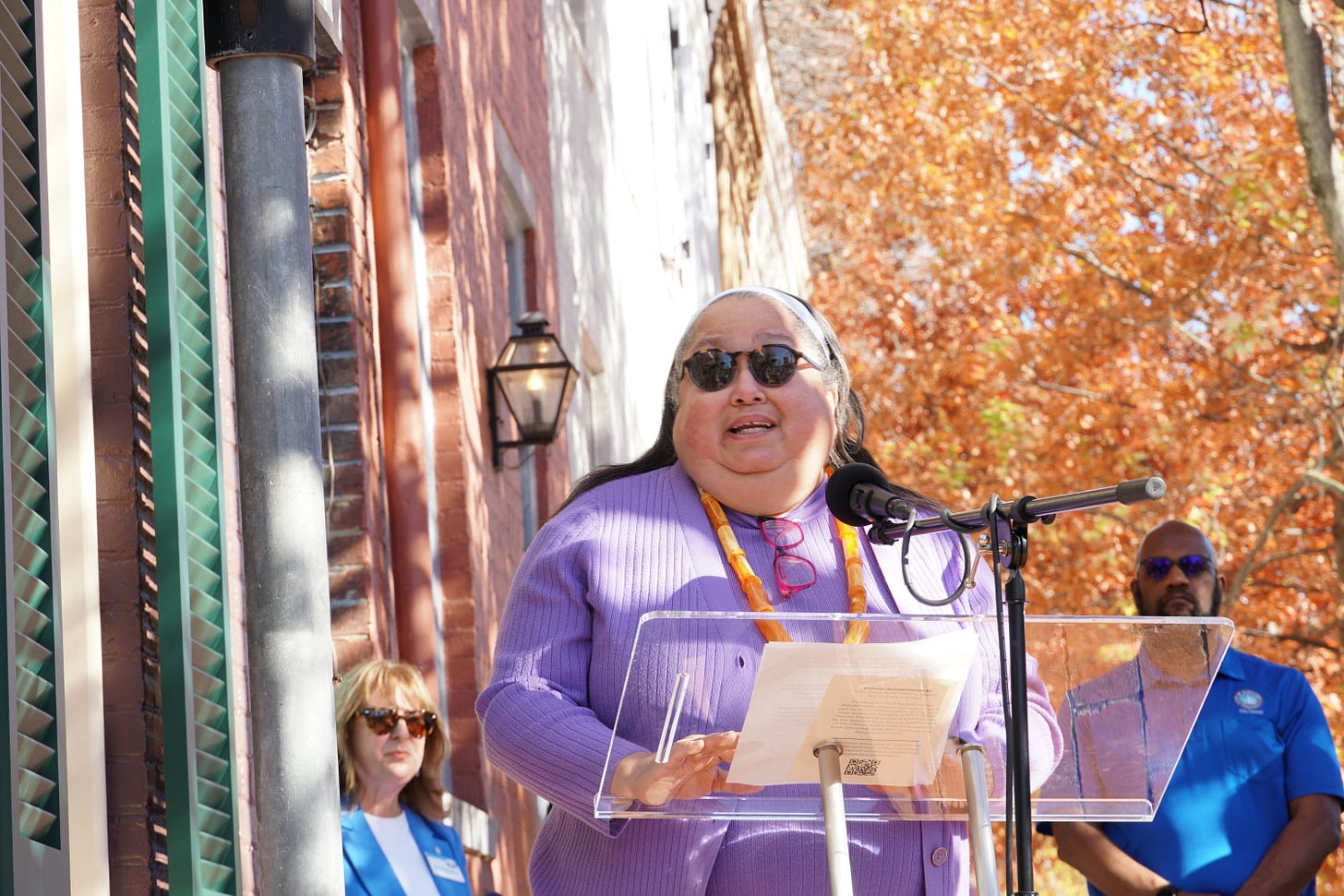
The Commonwealth of Virginia, a Save America’s Treasures grant from the Historic Preservation Fund administered by the National Park Service, and individual donations funded the project.
The next phase will focus on interior renovation to create exhibition galleries and spaces for genealogical research. Preservation specialists will design ways to make interior spaces accessible.
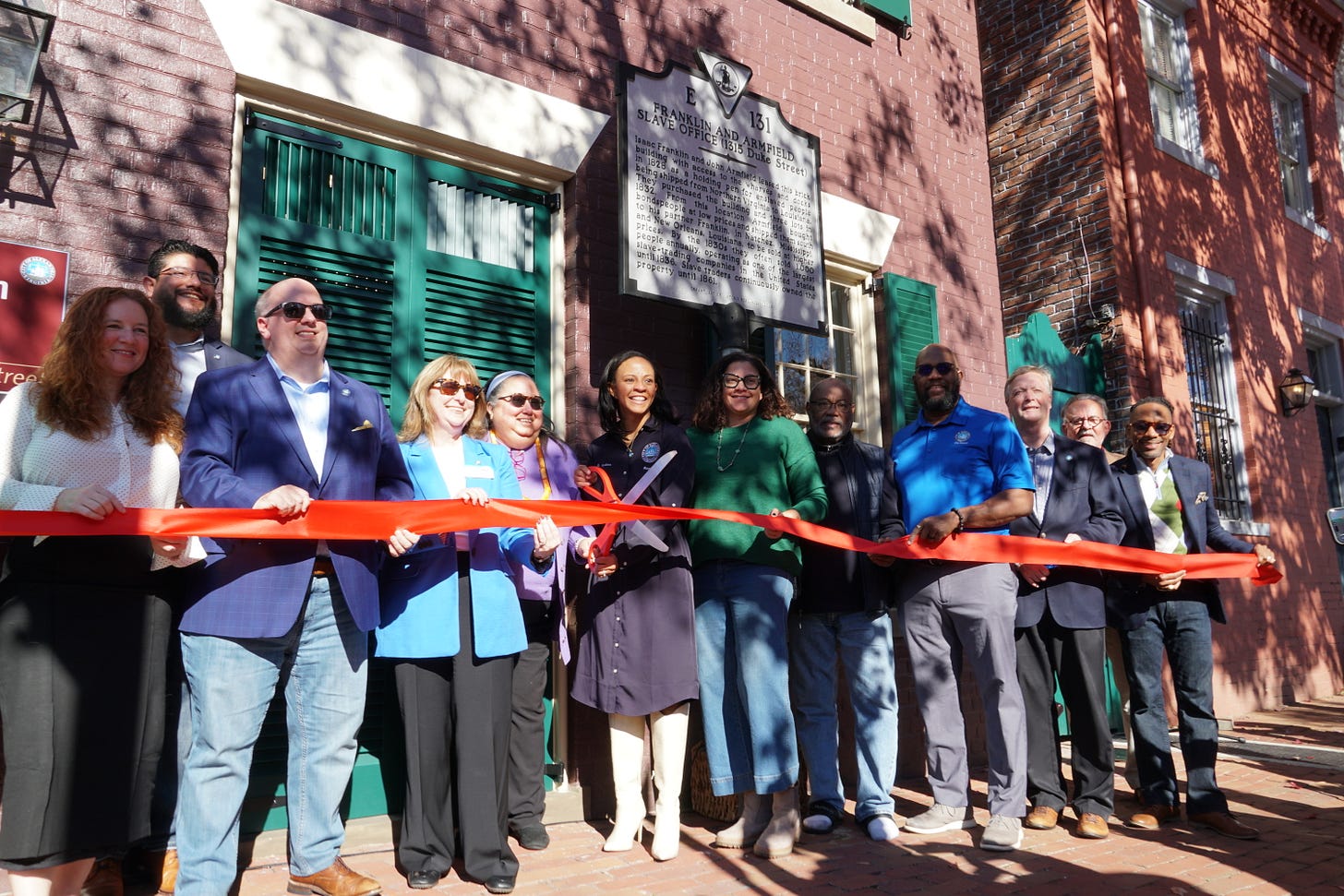
Franklin and Armfield operated one of the largest slave-trading companies in the U.S. during the 1830s, often selling 1,000 people annually.
Inside the museum
The museum features three floors of exhibitions. The first floor includes “1315 Duke Street,” focusing on individuals trafficked through the domestic slave trade, with archaeological artifacts and a model of the complex.
The second floor features “Determined: The 400-Year Struggle for Black Equality,” a traveling exhibition from the Virginia Museum of History and Culture, and “Determined in Alexandria,” which explores the efforts of Black Alexandrians in the fight for equality.
The third floor features “Before the Spirits are Swept Away,” paintings of African American sites by the late Sherry Z. Sanabria, and a reflection space with a bronze sculpture of the Edmonson Sisters.
The museum recommends that visitors plan for 1.5 hours and notes that the content is suitable for ages eight and older due to its sensitive nature.
The museum reopened to the public on November 6. Hours are 11 a.m. to 4 p.m. on Thursdays and Fridays, and 11 a.m. to 5 p.m. Saturday, and 1-5 p.m. Sunday. The Office of Historic Alexandria purchased the building in 2020 from the Northern Virginia Urban League. It is the office’s eighth museum.
Davis said the museum represents a commitment to comprehensive historical truth-telling. “We want to prove that being American does not mean negating, dismissing, or hiding history, however painful,” she said. “It means shining a light in all the corners, elevating all the stories and all the historic figures that make our country what it is.”
